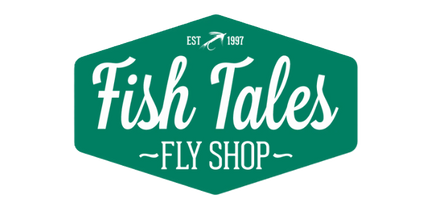Pike On The Fly - An Overview by David Blair
May 28, 2025
Northern Pike are one of the best fly rod fish out there for those looking for something beyond trout. They are readily available in most Alberta waters, can be aggressive in shallow water, and are your best chance to land a fish of 20 pounds or more on a fly rod in fresh water. Here is some advice on how to target pike:
Pike Season
Depending how far north you are looking to fly fish the season is slightly different due to ice off, water temperatures, fishery closures, etc. In the south portion of Alberta the season opens in early May. You can check Alberta Fishing Regulations for specific openings in the area you plan to fish. In the south May, June late September and October are the best months for fly fishing as the fish tend to be in shallower water.
In the north (depending how far north you go) the season is late May (at the earliest) June, early July, and September. There are lakes in the far north of Alberta that will fly fish ok even in the summer due to the cooler water but typically the best fly fishing is June and September.

Water Temperatures
Water temperature is the most important factor that brings and keeps pike in the shallow water and readily accessible to fly angling. Pike typically spawn when the shallows (less than 2m deep) are in the 4-9C (39-48F) range. This can happen when the main body of water in a lake or reservoir still has ice on it. Once spawning is completed and the fish recover for a relatively short period of time pike start to hunt for the warmest water. Shallow water again will continue to be the warmest and generally you look for water 10-20C (50-70F). With the sweet spot being 15-17C when the main lake is still noticeably colder. Weather and wind has a huge impact on this which makes your thermometer your most important piece of gear for pike fishing. Pike move in and out of bays and shallow areas regularly (even in the same day). This means there may be nothing around at 10am but at 2-3pm the fish are there and eating due to the slight water temperature increase.
Location Strategies
In rivers you want to find the slow back eddies or bays with a few feet of water that don't have much if any flow which allows the water to warm up. In lakes and reservoirs you want to look for south facing bays (in the early part of the season) ideally mainly isolated from the main lake with a narrow opening that doesn't let much water move between the bay and the main lake. If the bay has a dark bottom that helps even more with absorbing the suns energy to warm the water faster. Some of these places may be shallower than 1m!!! As the season progresses and the water warms in other bays and parts of the lake continue to find that warmer water until the main lake starts to get up to 15C or so then the pike are happy to move freely around.
The warm water in the bays gets the weeds starting, gets the bugs starting which attracts various minnow species which the pike move in to eat. Big pike eat many smaller pike so it's a vicious food chain in the pike's world. Male pike don't get very big at all (under 30") and one week they may find themselves mating with respective larger females and the next week they are dinner!
As you explore a lake take note of the water temp every hour or so as it will change in the spring a fair bit. Wind will also "push" warmer surface water to specific locations within a bay and you may find fish highly concentrated in a relatively small area of an otherwise large bay.

Pike Fly Fishing Gear
You can use any of your standard trout gear to start pike fishing (5 or 6wt) as long as you realize the limitations of that gear. Pike less than 30" can be easily handled with your 5 or 6wt. You are also limited to the size and weight of fly you cast with these lighter rods. Many pike are caught on standard trout streamers because that is the size of prey these "smaller" pike are eating. Though a pike can eat something 30-40% of its body length. A 24" pike could eat something 10 or more inches long!! You can use heavy mono as your bite leader (30-40lb) however, I would ALWAYS recommend a wire tippet to prevent bite offs. Rio Powerflex bite wire or AFW Surflon are excellent and the titanium leader from SA is amazing but more expensive.
When you decide to have a more dedicated pike rig in hopes of catching that 20+ pounder then you need different gear. A 7 to 10wt is the range to look at with an 8 or 9 being the most common. The reel does not need to be fancy to work for pike however, these rod weights are exactly what you would use on a saltwater trip to fish salmon, bonefish, permit, baby tarpon, etc so you may want to consider getting a reel that could eventually be used in that environment with a good drag as those salt species demand. Redington Behemoth is a decent start!
A floating line with an aggressive taper (Outbound, Titan, or Predator) is an ideal start but an intermediate or med rate sink line is key as well to get your fly into the zone a bit faster and stay longer when you are fishing in 5-10 feet of water.
A 6-7' long leader for a floating line with 18" of wire bite (20-30lb) tippet works very well. This can be as simple as a straight piece of 25-30lb Maxima or a premade tapered leader. I like to put a swivel to connect the wire to mono to make tippet changes easier. Having the swivel there when landing pike is a huge help as well as pike tend to "death roll" when being landed and the swivel helps prevent a bunch of twisting in your wire leader. If you fish a sinking or sink tip line the mono section only needs to be 3-4' long with the 18" of wire.
Tippet and Knots
Have a perfection loop in the butt section of your leader for easy changes. Then tie in the swivel with a 4-5 turn clinch knot. To tie the wire to the swivel use a 2-3 turn clinch or a figure 8 knot. To tie the wire tippet to the fly use a non slip mono loop (Lefty's Loop) to allow your fly maximum movement in the water.

Flies For Pike
A wide range of flies work for pike. To start, if you use your larger trout streamers like Clouser minnows, buggers, dungeons and more, you will catch pike. Once ready with gear and casting ability, use larger flies that are more pike-specific, like Courtney's unweighted Pike Bunny and Pike Schlapper, the highly effective Hula Diver, Half and Half, Whistler, perch patterns, Black rabbit leeches, Rio's Playbate, Stir Fry Baitfish, and more.
One of the most fun ways to fish pike is on the surface with a mouse pattern that your 5/6 rod can handle. Watching pike smash a mouse is worthy entertainment!
Pike Fly Fishing Strategies
Find the warm water and work it! Start in about 10 feet of water, if you're in a boat, and work you way toward shore and the shallow shelves. If there is a drop off going from 2/3' of water to 5/6 feet that is an excellent place to fish from shore. Our reservoirs have many km of shoreline that have these shelf drop offs. Try a slower retrieve to start and if the fish appear active and are swiping at flies as you lift them out of the water to cast then speed up your retrieve. If they are lazy and only follow and do not commit then try the black leech with a slow leech like retrieve you might be surprised what can happen!

Releasing Tips For Pike
Please DO NOT hold pike vertically for a photo. It is bad for their internal organs. Pike can be tricky to handle. You will need a couple of tools to help you safely (for the pike and you!) release them. Long forceps or needle nose pliers and jaw spreaders (tips covered in tape) make releasing pike work more smoothly. Pike have A LOT of teeth spread all through their mouth so always be aware of that. The best way to hold them is by sliding your hand along the gill plate up to the Y shaped junction and the jaw bone. Cup you fingers inside the "notch" to be able to control the pike. Sometimes they twist (especially larger ones) and you need to be careful and allow your hand to twist with them. If you are in a boat hold them over the water so if you drop the fish it doesn't bang around in the boat. ALL large pike are females and are crucial for the future so treat them with respect and release them in good condition.
Where allowed pike are excellent to eat once you remove the bones. Especially in the north where the water stays cold. They are one of my favorite fish to eat. Enjoy if legal!



